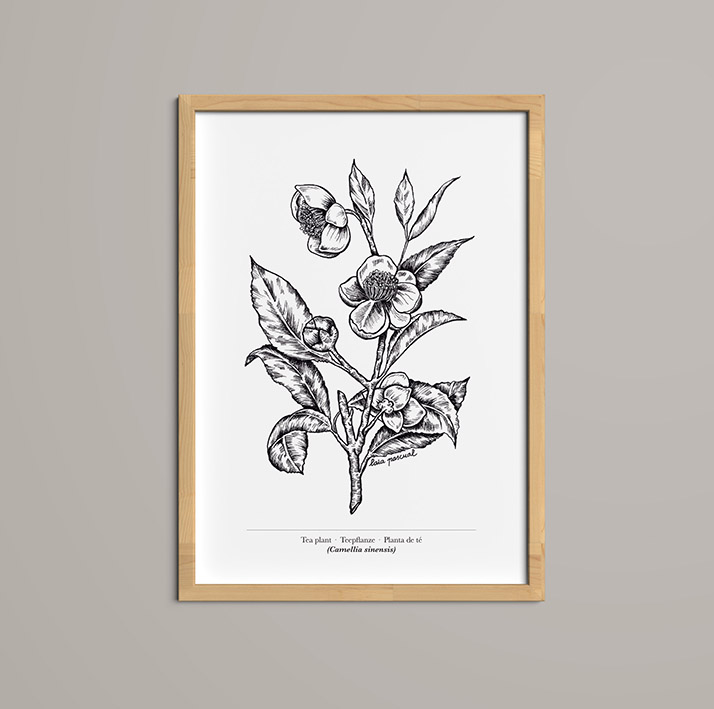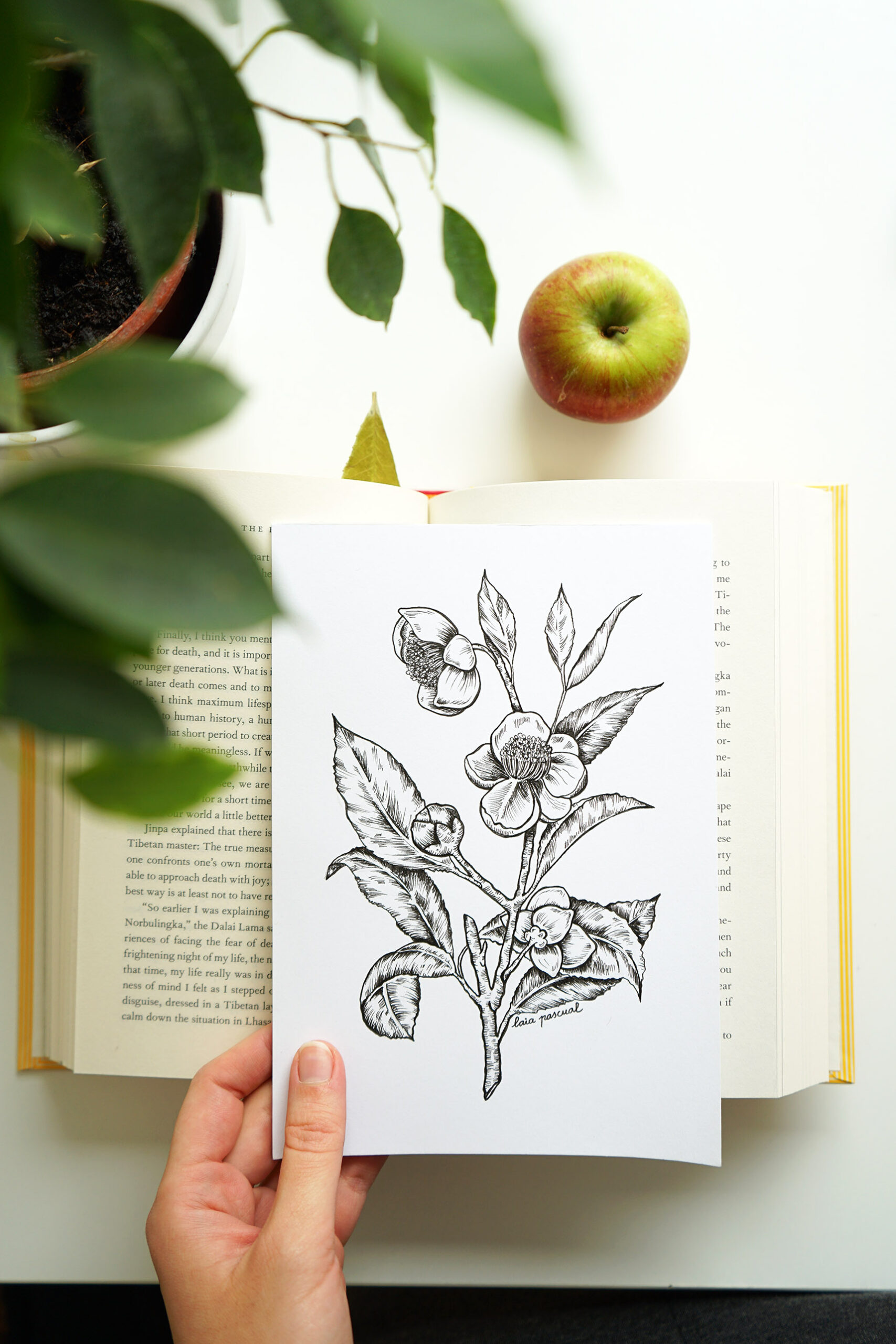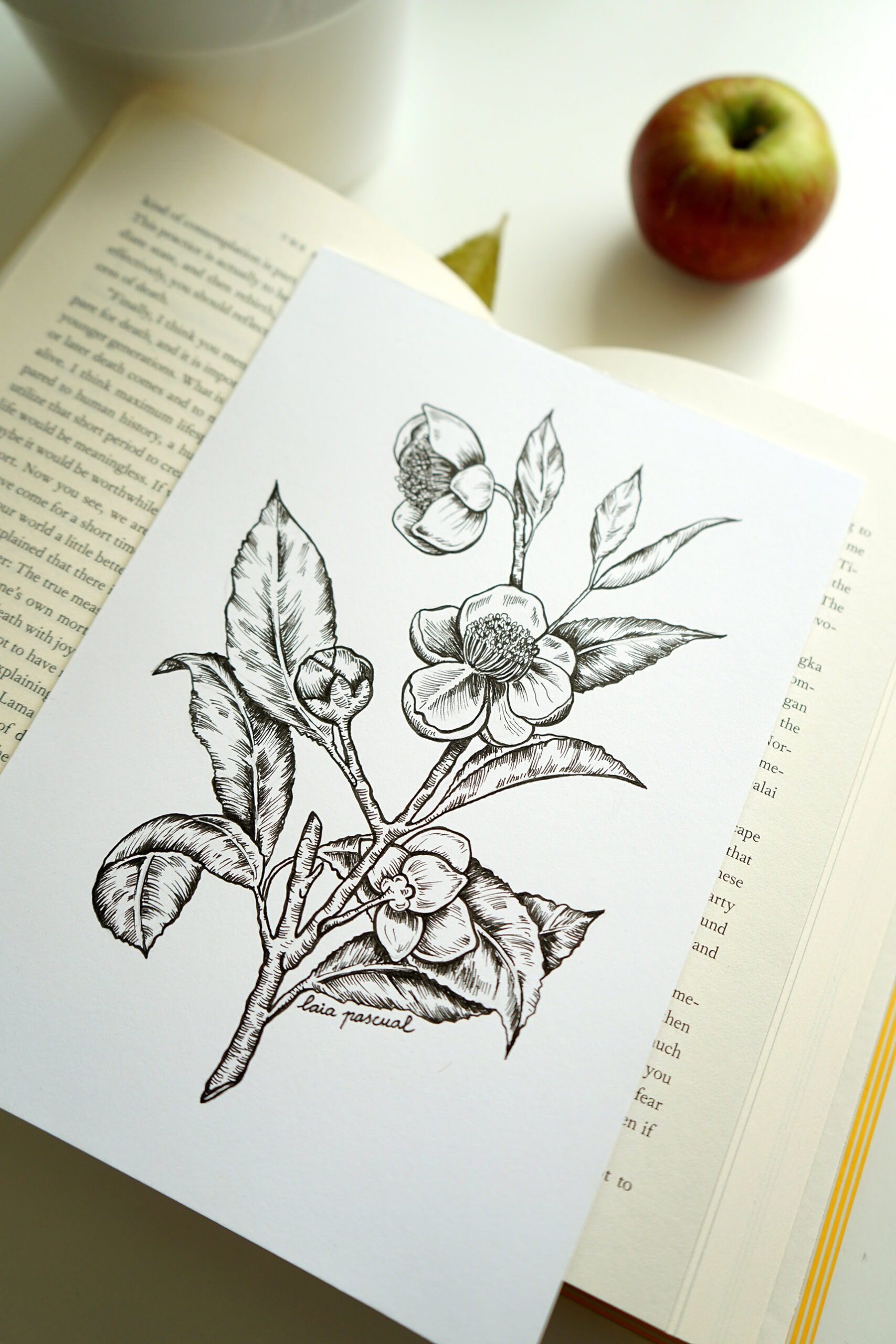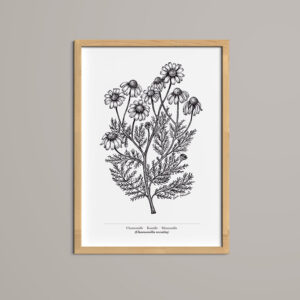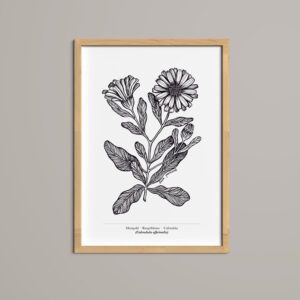CHF 25.00
Tea plant · Teepflanze · Planta de té (Camellia sinensis)
Camellia Sinensis is an evergreen shrub. It is in leaf all year, in flower from March to May. The species is hermaphrodite (has both male and female organs) and is pollinated by Bees.
The medicinal effects of tea have a history dating back almost 5000 years. The chemical components of green tea chiefly include polyphenols, caffeine and amino acids. Tea also contains flavonoids, compounds reported to have anti-oxidant properties having many beneficial effects. Tea flavonoids reduce inflammation, have antimicrobial effects and prevent tooth decay. Consumption of tea may have diuretic effects due to the caffeine.
Green tea is made from the steamed and dried leaves, whilst black tea is made from leaves that have been fermented and then dried. The leaves contain about 25.7% protein, 6.5% fat, 40.8% carbohydrate, 5% ash, 3.3% caffeine, 12.9% tannin. Terminal sprouts with 2-3 leaves are usually hand-plucked, 10 kg of green shoots (75-80% water) produce about 2.5 kg dried tea. The bushes are plucked every 7-15 days, depending on the development of the tender shoots. Leaves that are slow in development always make a better flavoured product.
- Technique: Ink on paper
- Print: Natural off-white 325g paper, FSC (without frame)
- Description: English, German, Spanish and the botanical name in latin
- Size: 148 x 210 mm (A5)

